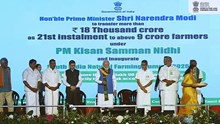
With the pressure mounting to nourish a growing global population and reduce environmental harm, the trajectory of global agriculture is under increasing scrutiny. A new OECD-FAO Agricultural Outlook offers a glimpse into what lies ahead. Global production of agricultural and fish commodities is projected to rise by 14% between 2025 and 2034, driven by rising incomes, population growth, and shifting diets. According to the report, this increase will be concentrated primarily in middle-income countries, where investments in technology, infrastructure, and value chains are expected to pay dividends.
Global production of agricultural and fish commodities is projected to rise by 14% between 2025 and 2034, driven by rising incomes, population growth, and shifting diets. According to the OECD-FAO Agricultural Outlook, this increase will be concentrated primarily in middle-income countries, where investments in technology, infrastructure, and value chains are expected to pay dividends.
Regional Growth Engines
South and Southeast Asia, Latin America, and parts of Sub-Saharan Africa are expected to contribute the most to this increase. These regions are projected to expand both crop and livestock production through input intensification, particularly in feed, fertilisers, and irrigation technologies.
High-Income Nations Plateauing
In contrast, high-income countries such as the U.S., EU members, and Japan will see slower growth. Their markets are largely saturated, and policy efforts are increasingly focused on sustainability over expansion.
GHG Emissions: Growing Concern
While output is expected to increase, so are greenhouse gas (GHG) emissions. The report predicts a 6% rise in direct agricultural emissions over the same period. Livestock, particularly ruminants, will remain the largest contributors, alongside fertiliser use and rice cultivation.
Productivity vs. Sustainability
Although emissions will rise in absolute terms, the carbon intensity of food production- GHGs emitted per unit of output- is expected to decline. This reflects improvements in efficiency through better genetics, smart farming tools, and conservation practices. However, this alone won’t be enough to offset total emissions.
A Fork in the Road
The Outlook stresses that countries must adopt region-specific strategies. In emerging economies, there is an urgent need to combine productivity growth with environmental safeguards. Innovations such as drip irrigation, crop-livestock integration, and nutrient recycling must be scaled up.
Funding the Transition
Meeting these dual goals will require substantial public and private investment. Blended finance models, results-based climate finance, and green bonds are proposed as solutions to mobilise resources for sustainable intensification.
The challenge for the next decade is not just to grow more food, but to do so in ways that sustain ecosystems and reduce emissions. With coordinated action, the goal of producing more with less is within reach.
















